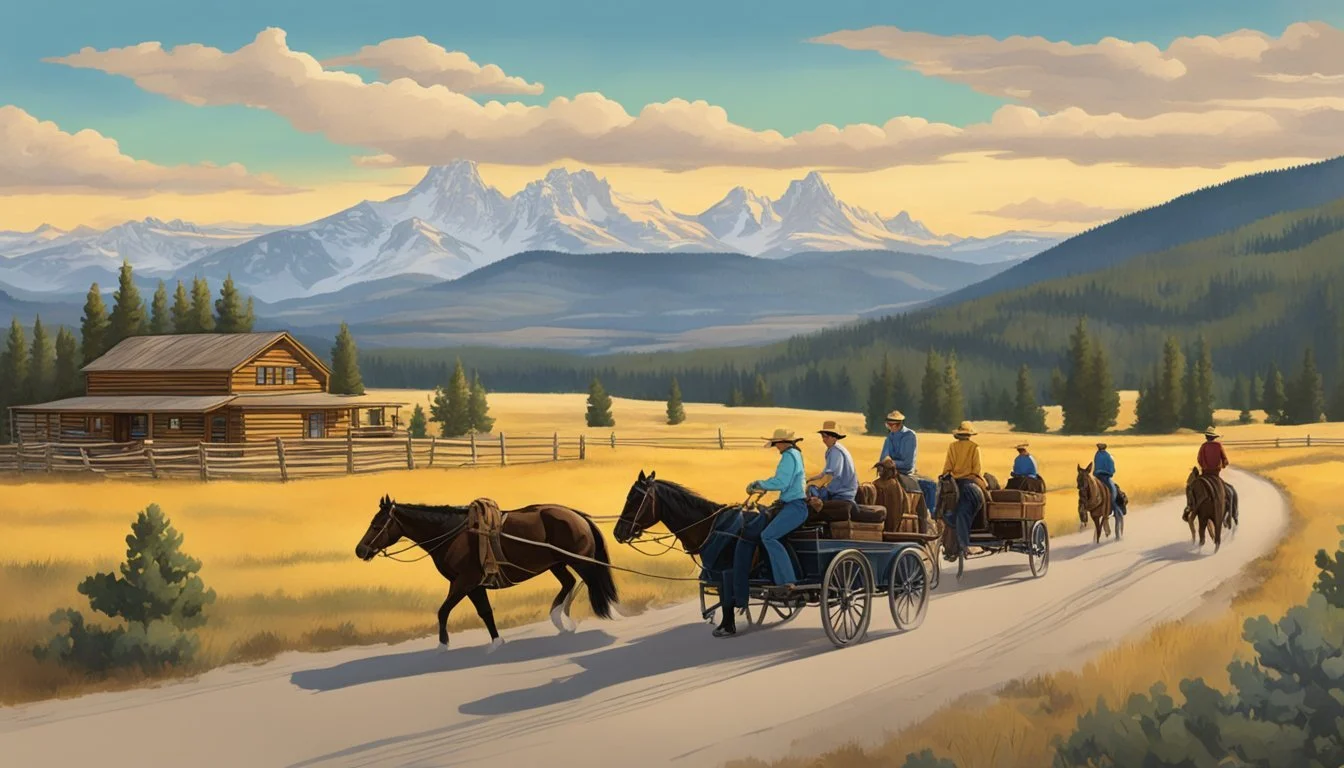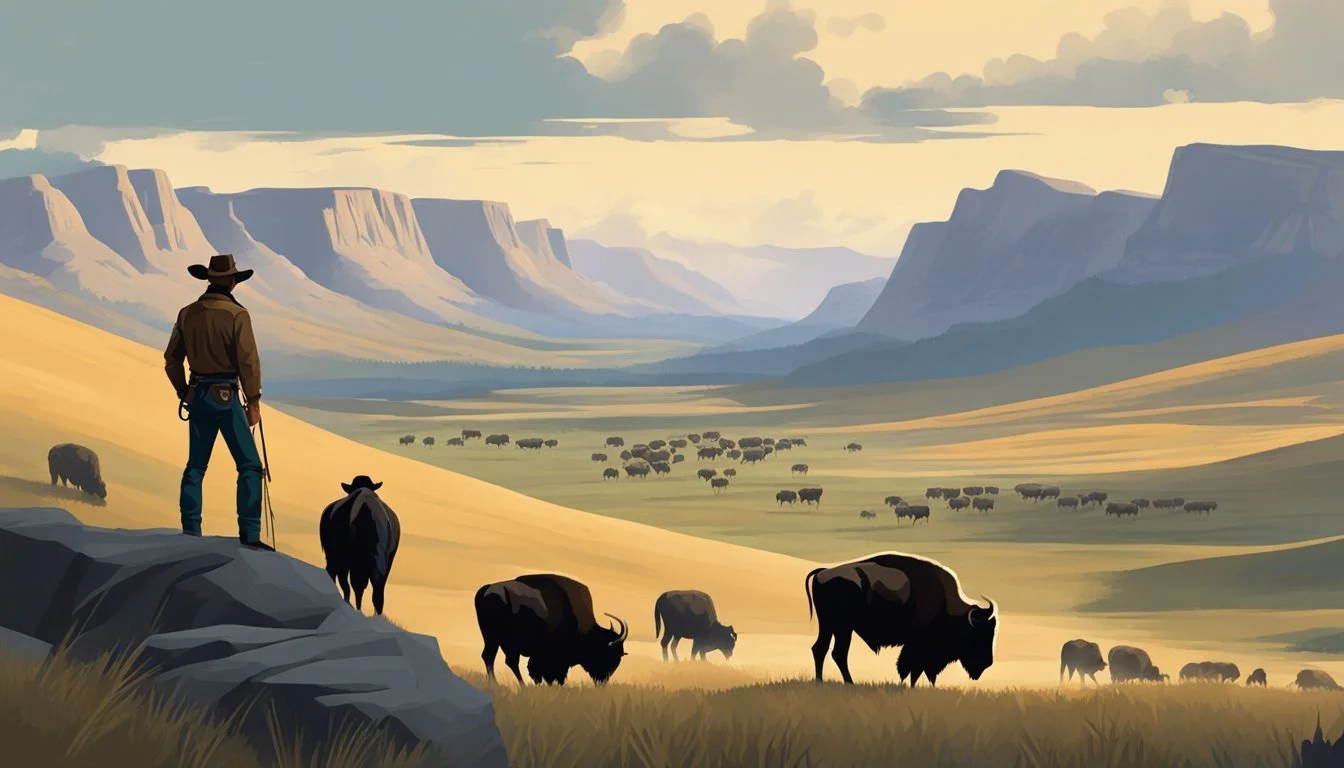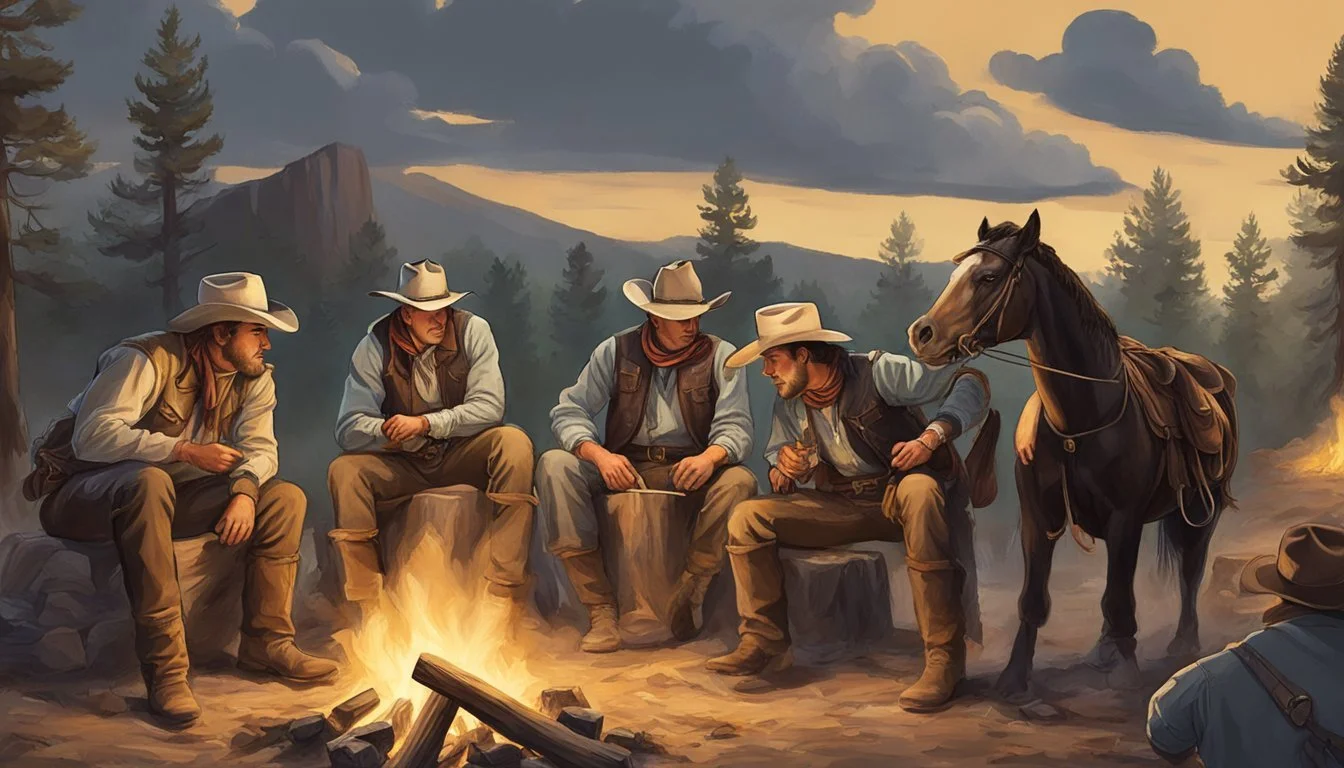Discover the Hidden Gems of Paradise Valley in the Yellowstone Show Phenomenon
Paradise Valley, nestled between Montana's Absaroka and Gallatin mountain ranges, has gained newfound fame as the stunning backdrop for the hit TV series "Yellowstone." This picturesque region serves as the fictional home of the Dutton family's sprawling ranch, captivating viewers with its rugged beauty and wild landscapes.
The popularity of "Yellowstone" has sparked a tourism boom in Paradise Valley, drawing fans eager to experience the breathtaking scenery showcased in the show. Visitors flock to the area, hoping to glimpse the majestic vistas and immerse themselves in the cowboy culture portrayed on screen. While the actual Dutton ranch is a set located elsewhere, Paradise Valley's real-life ranches and natural wonders offer an authentic taste of the Montana wilderness.
The show's impact extends beyond tourism, shining a spotlight on the region's rich history and cultural heritage. Paradise Valley's transformation into a TV phenomenon has brought renewed interest in Montana's ranching traditions and the challenges faced by modern-day cowboys. As viewers connect with the dramatic storylines of "Yellowstone," they also develop a deeper appreciation for the real Paradise Valley and its place in the American West.
Paradise Valley and Its Significance
Paradise Valley captivates with its stunning natural beauty and deep historical roots. This picturesque region plays a crucial role in Montana's landscape and culture, serving as a gateway to Yellowstone National Park.
Geography and Landscape
Paradise Valley stretches along the Yellowstone River in southwestern Montana. It is bordered by the Absaroka Range to the east and the Gallatin Range to the west. The valley extends approximately 50 miles north from Yellowstone National Park.
Emigrant Peak, a prominent 10,921-foot mountain, dominates the eastern skyline. The valley floor consists of fertile grasslands and agricultural areas. Numerous creeks and streams feed into the Yellowstone River, creating a lush ecosystem.
The region's diverse terrain supports a rich variety of wildlife, including elk, deer, and various bird species. This unique geography contributes to Paradise Valley's reputation as one of Montana's most scenic areas.
Historical Significance
Paradise Valley has a rich history dating back thousands of years. Native American tribes, including the Crow and Shoshone, inhabited the area long before European settlers arrived.
In the 19th century, the valley became a key route for early explorers and fur trappers. The discovery of gold in Emigrant Gulch in 1864 led to a brief mining boom.
Ranching emerged as a dominant industry in the late 1800s. Many of the valley's historic ranches still operate today, preserving traditional ways of life.
The Northern Pacific Railway's arrival in 1883 spurred further development and tourism. This laid the foundation for the valley's enduring appeal to visitors and newcomers alike.
Connection to Yellowstone National Park
Paradise Valley serves as the northern gateway to Yellowstone National Park, established in 1872 as the world's first national park. This proximity has shaped the valley's development and identity.
The valley provides critical wildlife corridors for species moving in and out of the park. Many Yellowstone visitors pass through or stay in Paradise Valley, contributing to the local economy.
Conservation efforts in the valley often align with park initiatives. Local organizations work to protect open spaces and maintain the ecological balance between developed areas and wilderness.
Paradise Valley's stunning vistas and outdoor recreation opportunities complement the Yellowstone experience. This synergy between the valley and the park creates a unique destination for nature enthusiasts and adventure seekers.
The Dutton Family Saga
The Dutton family's multi-generational story spans over a century, chronicling their struggles to maintain control of their vast Montana ranch. Their saga intertwines with the history of the American West, showcasing the family's resilience and determination.
Generational Legacy
The Dutton legacy begins in the late 19th century with James and Margaret Dutton. They establish the Yellowstone Dutton Ranch in Paradise Valley, Montana, after a perilous journey from Texas. Their children, John Dutton I and Spencer, continue the family's ranching tradition.
John Dutton II takes over the ranch in the mid-20th century. He faces challenges during a period of rapid change in the American West.
John Dutton III, the current patriarch, leads the family in modern times. He fiercely protects the ranch from external threats and internal conflicts.
Key Family Members
John Dutton III, portrayed by Kevin Costner, stands as the central figure in the modern Yellowstone series. His children play crucial roles in the family dynamics:
Beth Dutton: A sharp-minded businesswoman and John's fiercest ally
Kayce Dutton: A former Navy SEAL torn between family loyalty and his own path
Jamie Dutton: The adopted son with political ambitions
Lee Dutton: The eldest son (deceased)
Tate Dutton, Kayce's son, represents the youngest generation and the future of the Dutton legacy.
Dutton Ranch and Its Role
The Yellowstone Dutton Ranch serves as the heart of the family's story. It spans 500,000 acres, making it the largest contiguous ranch in the United States.
The ranch faces constant threats:
Land developers
Native American reservations
Government agencies
These conflicts drive much of the series' drama. The Duttons employ various tactics to maintain control, often blurring ethical lines.
The ranch symbolizes the family's power and connection to the land. It represents a bygone era of the American West that the Duttons fight to preserve.
Cultural and Environmental Themes
"Yellowstone" explores the complex interplay between Montana's traditional ranching culture and modern conservation efforts. The show highlights tensions surrounding wildlife protection, land use, and property rights in the American West.
Ranching Culture
The series portrays ranching as central to Montana's identity. Cattle drives, horseback riding, and traditional cowboy attire feature prominently. The Dutton family's struggles to maintain their ranch reflect real challenges faced by modern ranchers.
Ranchers in the show grapple with economic pressures, changing land use patterns, and conflicts with conservationists. These depictions resonate with viewers familiar with the region's ranching heritage.
Wildlife Conservation
"Yellowstone" showcases Montana's diverse wildlife, including grizzly bears, elk, and mule deer. The show addresses conservation efforts and the challenges of human-wildlife coexistence.
Storylines touch on the Endangered Species Act and its impact on ranching operations. Conflicts arise when protected species threaten livestock or restrict land use.
The series highlights the importance of maintaining wildlife corridors and preserving habitats. It also explores the role of wildlife management in balancing ecological and economic interests.
Land Preservation Conflicts
Property rights and land use disputes form a key theme in "Yellowstone." The show depicts conflicts between ranchers, developers, and conservationists over Montana's scenic landscapes.
Stream access laws, which allow public access to waterways on private property, create tension in the series. These scenes reflect real-world debates over public land use and private property rights.
The show explores the challenges of balancing economic development with environmental preservation. Characters debate the merits of land conservation easements and the role of government in protecting natural resources.
Yellowstone: The Television Series
"Yellowstone" has become a cultural phenomenon, captivating audiences with its intense family drama and stunning Montana landscapes. The series explores themes of power, loyalty, and the changing American West through the lens of the Dutton family.
Origins and Development
Taylor Sheridan created "Yellowstone" as a modern Western drama. The show premiered on the Paramount Network in June 2018. Sheridan drew inspiration from his experiences in rural America and his desire to explore the conflicts between land developers, government, and Native American reservations.
The series is primarily filmed at the Chief Joseph Ranch in Darby, Montana. This location serves as the fictional Yellowstone Dutton Ranch. Additional scenes are shot in various Montana locations, including the Paradise Valley area.
Kevin Costner's involvement as John Dutton, the patriarch of the Dutton family, lent star power and credibility to the project from its inception.
Character Dynamics and Development
The Dutton family is at the heart of "Yellowstone." John Dutton leads the clan with a mix of ruthlessness and devotion to his legacy. His children each play crucial roles in the family drama:
Beth Dutton (Kelly Reilly): The fierce and intelligent daughter
Jamie Dutton (Wes Bentley): The ambitious and conflicted lawyer son
Kayce Dutton (Luke Grimes): The former Navy SEAL struggling with his identity
Rip Wheeler (Cole Hauser) serves as the loyal ranch foreman and Beth's love interest. His complex relationship with the Duttons adds depth to the series.
Character arcs evolve throughout the seasons, revealing hidden motivations and testing loyalties.
Plot Summary and Symbolism
"Yellowstone" centers on the Dutton family's efforts to protect their vast ranch from outside threats. These include land developers, the nearby Broken Rock Indian Reservation, and various political adversaries.
Key plot points include:
Land disputes with Native American tribes and developers
Political maneuvering and corruption
Family betrayals and reconciliations
Violent conflicts with rival ranchers and criminal organizations
The ranch itself symbolizes the American dream and the changing face of the West. The series explores themes of legacy, tradition, and the cost of power.
Impacts and Reception
"Yellowstone" has garnered a large and dedicated fanbase. Its success led to the creation of spin-off series, including "1883" and "1923."
The show has significantly boosted tourism in Montana, particularly in areas featured in the series. The Paradise Valley region has seen an influx of visitors eager to experience the landscapes depicted on screen.
Critics have praised the show's performances, particularly Kevin Costner's portrayal of John Dutton. The series has received recognition for its cinematography, capturing the rugged beauty of Montana.
"Yellowstone" has sparked discussions about land use, conservation, and the modern cowboy lifestyle. Its portrayal of Native American issues has both drawn praise and faced criticism for its accuracy and representation.
Spin-Offs and Extended Universe
The Yellowstone franchise has expanded beyond its original series, delving into different time periods and exploring the rich history of the Dutton family. These spin-offs offer viewers a deeper understanding of the characters' origins and the events that shaped their legacy.
1883: The Origin Story
1883 serves as a prequel to Yellowstone, taking viewers back to the late 19th century. The series follows James Dutton, the great-grandfather of John Dutton, as he leads his family on a perilous journey westward. Elsa Dutton, James' daughter, narrates the story, providing insight into the hardships and triumphs of pioneer life.
The show explores themes of survival, family, and the American dream. It showcases the raw beauty of the untamed West while highlighting the dangers faced by settlers. 1883 offers a glimpse into the foundation of the Dutton empire and the values that would shape future generations.
Future of the Dutton Narrative
The success of Yellowstone and 1883 has paved the way for additional spin-offs. These new series aim to further expand the Dutton family saga across different time periods and locations. Upcoming projects include 1923, which will focus on a new generation of Duttons during the early 20th century.
Other potential spin-offs are in various stages of development. These may explore different branches of the Dutton family tree or delve into specific characters' backstories. The expanding Yellowstone universe promises to offer fans a comprehensive look at the family's enduring legacy in the American West.
Economic and Legal Aspects
The fictional Paradise Valley in "Yellowstone" serves as a backdrop for complex economic pressures and legal battles. These issues reflect real challenges faced by rural communities adjacent to national parks and protected lands.
Land Development and Economic Pressure
Paradise Valley faces intense economic pressure from land developers and outside investors. Market Equities, a powerful corporation, seeks to transform the area with large-scale development projects. These plans include luxury resorts, airports, and casinos, promising economic growth but threatening the traditional ranching way of life.
Dan Jenkins, a real estate developer, represents the urban interests pushing for change. His vision clashes with local ranchers who want to preserve their land and heritage. The show highlights the tension between economic progress and cultural preservation.
Casino moguls, including Thomas Rainwater from the Broken Rock Indian Reservation, add another layer to the economic landscape. Their projects offer potential economic benefits for the reservation but also raise concerns about environmental impact and community dynamics.
Legal Disputes and Ownership Battles
Legal conflicts form a central part of the Paradise Valley narrative. Land ownership disputes pit long-time ranchers against developers and tribal interests. The Dutton family frequently engages in legal battles to protect their ranch from encroachment.
Water rights emerge as a critical issue, mirroring real-world conflicts in the American West. The show depicts attempts to dam the Yellowstone River for development, sparking legal and ethical debates.
The Broken Rock Reservation's land claims add complexity to ownership disputes. Historical injustices and modern legal interpretations collide, creating a web of competing claims and interests.
Eminent domain threats loom over landowners, as government and corporate interests seek to acquire property for various projects. These legal challenges reflect the ongoing struggle between private property rights and public or corporate interests in many rural areas.
Recreation and Tourism
Paradise Valley offers diverse outdoor activities and attracts visitors drawn to its natural beauty and connection to the popular Yellowstone TV series. The region's tourism boom has brought both opportunities and challenges for the local community.
Outdoor Activities in Paradise Valley
Paradise Valley boasts world-class fishing opportunities, particularly fly fishing on the Yellowstone River. Anglers flock to the area for its abundant trout populations and scenic mountain backdrop. Hiking trails wind through the Absaroka and Gallatin ranges, providing access to breathtaking vistas and wildlife viewing opportunities.
Horseback riding tours allow visitors to experience the landscape like the characters in Yellowstone. In winter, cross-country skiing and snowshoeing become popular activities. Bozeman, located north of Paradise Valley, serves as a gateway for tourists, offering amenities and easy access to outdoor recreation.
Tourism Impact on Local Community
The Yellowstone TV series has significantly boosted tourism in Paradise Valley and surrounding areas. Park County has seen an influx of visitors eager to experience the rugged beauty portrayed in the show. This increased tourism has brought economic benefits, creating jobs and supporting local businesses.
However, the tourism boom has also led to challenges. Housing prices have risen, making it difficult for some locals to afford living in the area. Increased traffic and crowding at popular sites have impacted the region's infrastructure.
The Chief Joseph Ranch, used as the fictional Dutton Ranch in Yellowstone, has become a major attraction. While not open for public tours, its prominence has drawn fans to the area, contributing to the overall tourism surge in Paradise Valley.





